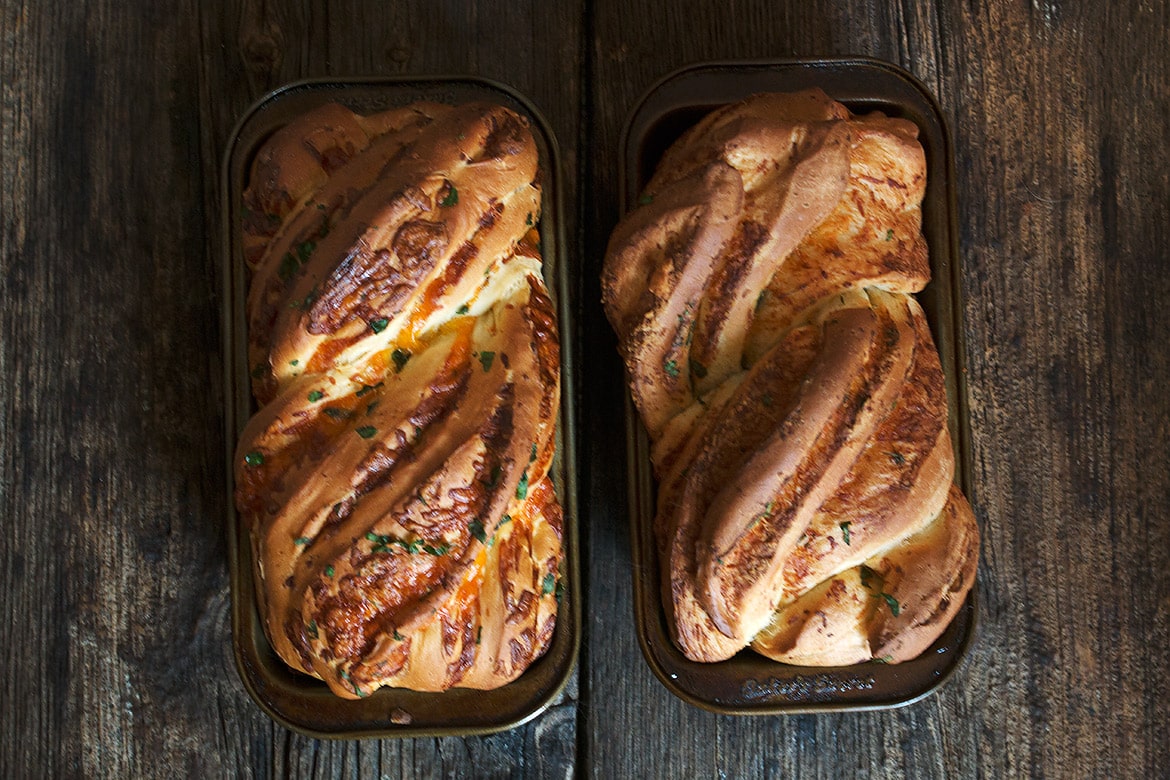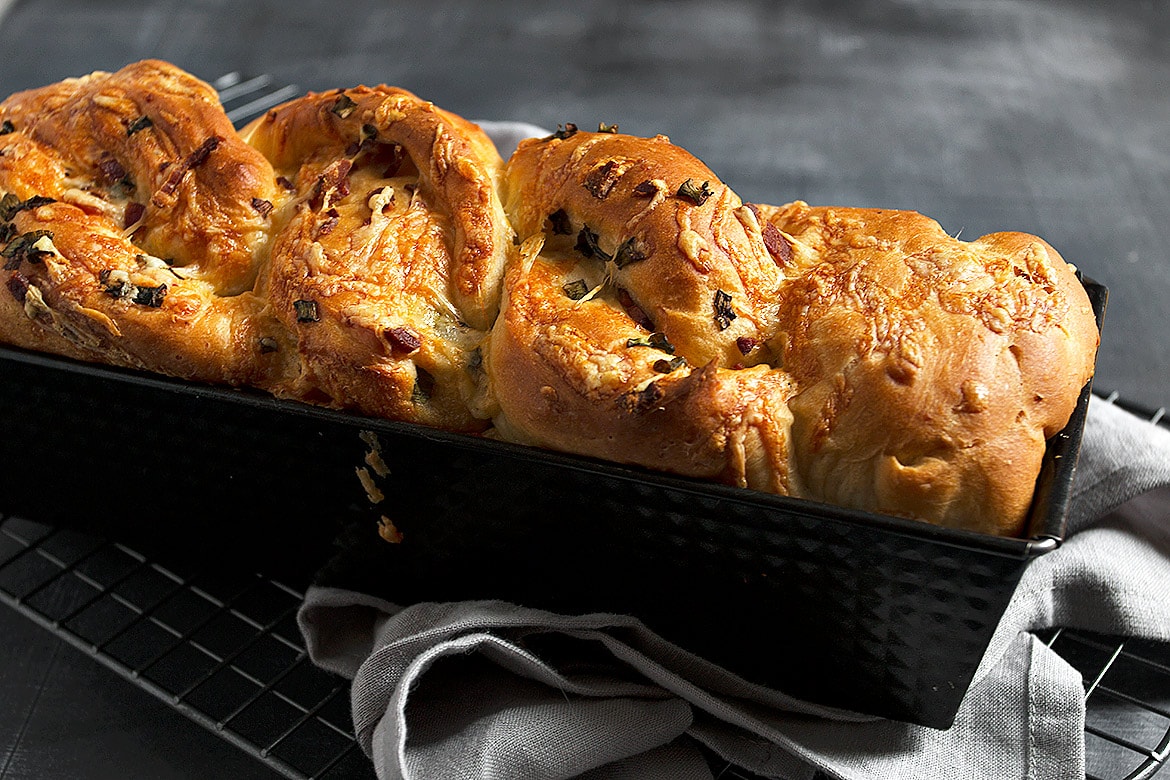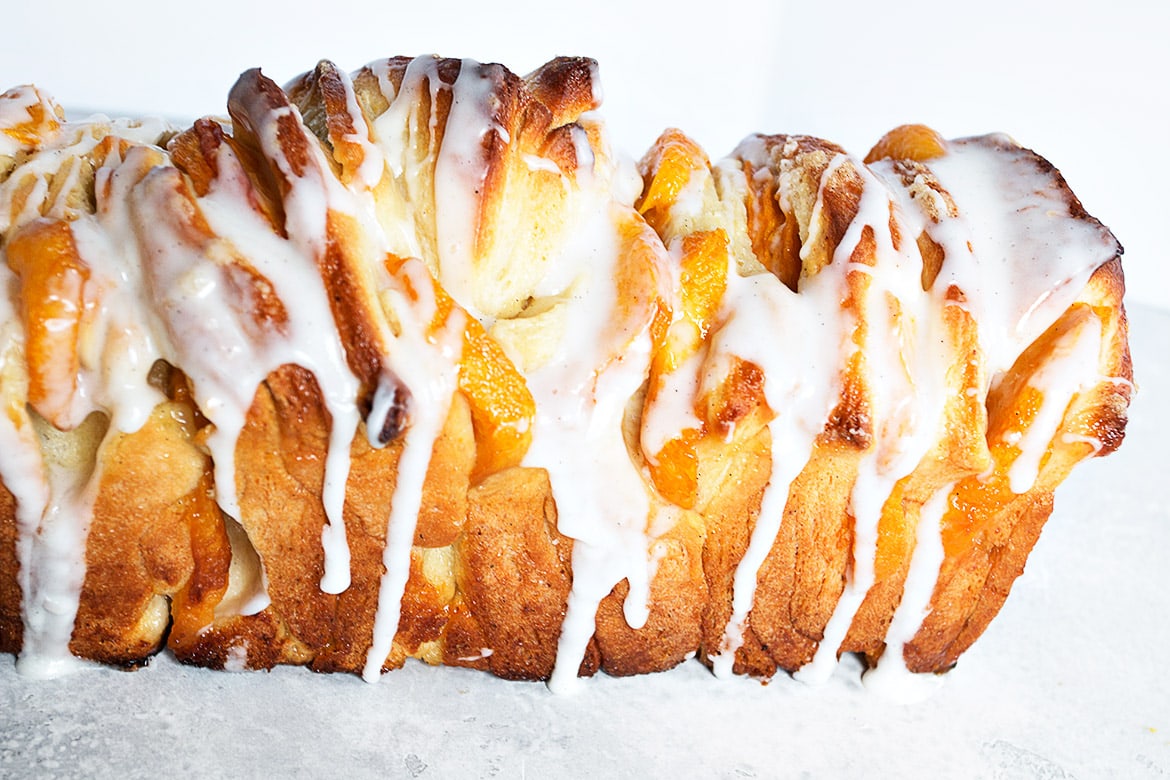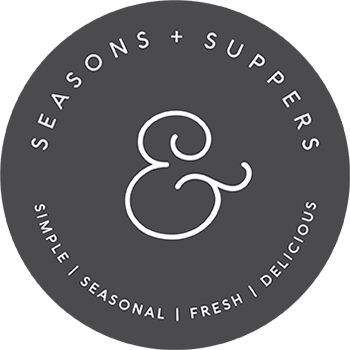Getting Started with Yeast Bread Baking
This post may contain affiliate links. Please read my disclosure policy.
- The bread making starter kit
- Understanding the different kinds of yeast
- The first rule of yeast bread baking
- Knowing when to stop adding flour
- Kneading
- First Rise – “Doubling”
- Shaping and second rise
- Knowing when your bread has risen enough to bake
- Baking your bread
- How to store your bread after baking
- And finally …
- Looking for some bread recipes?
The bread making starter kit
- Unbleached all purpose flour – unbleached all purpose flour is the flour of choice for bread bakers. Don’t use a “Bread” flour unless the recipe specifically specifies bread flour. Most standard loaf bread recipes are written for all purpose flour.
- SAF Instant Yeast – my recommended type and brand of yeast or alternately, standard Active Dry Yeast (see the next section for yeast options and alternatives)
- Instant read thermometer – An instant thermometer is so useful for checking the temperature of your yeast proofing water, as well as the internal temperature of baked bread, to be sure it’s really done. You’ll find a dozen other uses for it in your kitchen, as well.
- Stand mixer with kneading hook – obviously, people where making bread long before stand mixers showed up in kitchens, but if you are serious about regular bread making, you will be thankful for this wonderful tool! You can certainly make bread in a large bowl, a spoon and lots of elbow grease.
- Loaf pans – ideally, stock your kitchen with two 8 x 4 inch (1 lb) loaf pans and two 9 x 5 inch (1 1/2 lb) loaf pans. I much prefer metal pans, as they conduct heat evenly, for a better bake. I don’t love glass loaf pans, but if using glass, you may need to adjust the baking time.
- Kitchen Scale – you’ll find lots of reasons to have a scale in your kitchen when making bread. Many bread recipes are written in ounces or grams. It’s also handy for dividing/portioning dough for buns, to make sure they are all the same size and they cook evenly.
Understanding the different kinds of yeast
Bear in mind that different countries and brands use slightly different names for their yeast, but here are the basic kinds of dry yeast you might encounter:
Active dry yeast – the original type of yeast and what is generally meant when a recipe specifies “yeast”. Dry active yeast needs to be proofed (activated) in warm (105-110F) water. A bit of sugar is often added to the proofing water, to feed the yeast. Active dry yeast cannot be added directly to dry ingredients.
Instant Yeast – is essentially active dry yeast, but without the tough outer coating. As such, it doesn’t need to be proofed in water, though you can proof it in water, if you like. So Instant yeast can be added to water the same way active dry yeast is, or alternately, added directly to the dry ingredients.
*This is the type of yeast I always use in my kitchen, specifically SAF-brand Instant Yeast (see above for link). It comes in a large package, which I empty into a freezer container and keep in the freezer, for longer storage. Use it directly from the freezer as needed.
Bread Machine Yeast – really just another name for Instant yeast, as it is designed not to need to be proofed in water, as it is generally added into a bread machine with the other ingredients.
Rapid or Quick Rise Yeast – Different brands have different names. Some are regular instant yeast. Some are instant yeast that have additives to produce a quicker rise and some have so much of that additive, that they actually replace the first rise with a 10-minute rest. Read the yeast package instructions to understand what type of yeast you are working with.
The first rule of yeast bread baking
The first thing I tell everyone when they ask advice about bread making is that a bread recipe is never precise. Unlike a cake recipe, for example, where you just measure the ingredients as stated in the recipe, mix and bake, a bread recipe can never be made that way. Specifically, it is the in the flour amount where bread recipes become un-precise.
As your flour sits in your kitchen, it absorbs moisture from the humidity or maybe it dries out because you live in Arizona. Your kitchen’s flour will never be the same as my kitchen’s flour. So I may need to add 3 cups to a bread dough to get a smooth dough, while you only need 2 3/4 cups. So always (always!) treat the specified flour amounts in a bread recipe as APPROXIMATE, even if they don’t actually say that word.
Since there can be so much variation, you NEVER want to add the full amount of flour specified in the recipe at the start of mixing the dough (even if the recipe seems to suggest you should). ALWAYS hold back 1/4 to 1/3 of the total flour amount specified and then, add it in small increments to the dough, only as needed, as your dough develops.
The reason to do this is obvious. If your dough in your kitchen with your flour was only going to need 2 3/4 cups and you added 3 cups, now you have a dry, stiff dough. Now what? Will you add more water? Trust me, that doesn’t work well with a developed dough (think slimy mess :).
Knowing when to stop adding flour
Trust your eyes and don’t focus on the amount of flour you have or haven’t added. Just keep adding flour until you have a soft and smooth dough, that winds itself around the kneading hook and cleans the side of the bowl. (Unless of course, you are making a specific type of bread that uses a sticky/moist dough, in which case, follow the directions for the desired dough consistency to look/aim for).
Kneading
I do most of the kneading in my stand mixer. Once I remove the dough to a floured work surface, I will knead it by hand for a bit more, as much as I feel it needs. For a basic bread dough, you want the dough to be “smooth like a baby’s bottom”, so don’t be afraid to feel your dough and judge on that basis. Knead a bit more if you feel it needs it.
First Rise – “Doubling”
I always set my dough to do its first rise in a large 4 or 8 cup glass measuring cup (depending on how large the dough ball is). I spray it with cooking spray, drop the ball in smooth top down, then flip it over so the smooth top is up. This greases the top of the ball, so it doesn’t dry out. Cover the top of the measuring cup tightly with plastic wrap.
Once the dough ball is in the bowl, take a look and see how high up the cup the highest part of the ball reaches. Note the measure on the side of the cup. Allow the dough to rise until it reaches twice that, or “doubles” in size.
Again, the rising times stated in recipes are only guidelines and will vary from kitchen to kitchen and season to season. You want to let the bread rise until it has doubled, however long that takes. (And yes, you can over-rise bread dough. New bread bakers sometimes feel like they should leave bread rising a little longer, “just to be sure”. Find a system to be sure, trust what you see and stop when it has doubled).
Shaping and second rise
Once your dough has doubled, remove it to a floured work surface and shape as directed in the recipe. Never be afraid to add flour to the surface or directly to your bread, as needed, to work with the dough. Obviously, just add “as needed”, to avoid added too much flour to your dough.
Set the dough to rise for a second time. If it is in loaf pans, you can cover with a clean tea towel, though I generally prefer a piece of plastic wrap that has been sprayed with cooking oil on the underside, to avoid sticking. I find the plastic wrap keeps the dough more moist. If you aren’t a fan of plastic wrap, try re-usable beeswax sheets.
Knowing when your bread has risen enough to bake
This is maybe the hardest part to judge for new bread bakers and even sometimes for experienced (and impatient :) bread bakers. Again, trust what you see first and foremost and not the clock. If the bread was supposed to double again, has it? Poke your baby finger into the corner of the loaf. If the indentation immediately springs back/fills in, it’s not ready. If the indentation remains for a bit, then fills in slowly, it’s good to go. (If you poke it and the indentation stays unchanged, it is probably over-proofed.)
Again, recipes will often say something like “rise until doubled, about 30 minutes”, that is their experience in their kitchen. Maybe it was 80 degrees F. in their kitchen and you are rising your loaf in a 65 degree, Winter kitchen. It can and will be different between kitchens and seasons. Trust what you SEE, not the clock.
Baking your bread
I generally bake my loaves on the centre rack, unless it is a really big/tall loaf, in which case I will lower the rack down one level, so the top of the loaf doesn’t over-brown. Also if you have a smaller oven or an oven with an upper rack, make sure that your loaf isn’t going to hit that top rack as it bakes. I will often just pop the top rack out of my oven, to be safe.
Set your timer for about 10 minutes before the prescribed baking time and just take a peek at it through the oven window. How is the colour? If it is brown enough, maybe you want to lay a sheet of aluminum foil loosely over the top to slow additional browning. Keep baking until closer to the prescribed time, then pop the loaf out of the oven and test it with an instant read thermometer. Be sure you are inserting the probe so it reaches the centre of the loaf in the middle of the pan. A regular loaf bread should be baked until at least 190F. or up to about 210F. internal temperature, unless the recipe specifically states an internal temperature goal range. I generally aim for the loaf to reach between 190 – 195F. internal temperature, as I find the lower end of the range produces a nicer, more moist loaf.
How to store your bread after baking
Unless specified otherwise, you’ll want to remove your loaf from the baking pan immediately after removing it from the oven. This prevents the sides of the loaf from getting soggy. Most loaves will pop out easily. For some, especially sweet loaves with sugar, you may need to run a knife around the outside first. Remove loaf to a cooling rack.
Try as best you can to avoid slicing homemade bread while it is hot, as this can cause the insides of the loaf to get gummy. Let it cool until just slightly warm at least, or ideally cooled completely, before slicing.
To store your homemade bread, simply wrap the cut end with plastic wrap or foil (or both). If I expect a loaf to just last the day, I’ll just place it on a cutting board with the cut side down, to protect the cut end from the air. Homemade bread freezes beautifully. Simply cool completely and wrap tightly with plastic wrap, followed by aluminum foil. Pop in the freezer for up to one month. Thaw on the counter with the tight wrapping still on it, to avoid the loaf drying out as it thaws.
And finally …
Keep practicing and don’t get discouraged. Even if your first few loaves aren’t perfect (I know mine weren’t!), you will learn something from every bake. Try to figure out where you may have gone a little wrong and try to fix it next time. But most of all, sit back and enjoy the miracle that is bread making. You started with just a few simple ingredients and you made a loaf that grew into something awesome :)
Looking for some bread recipes?
Check out the my Bread Recipe Archive.






